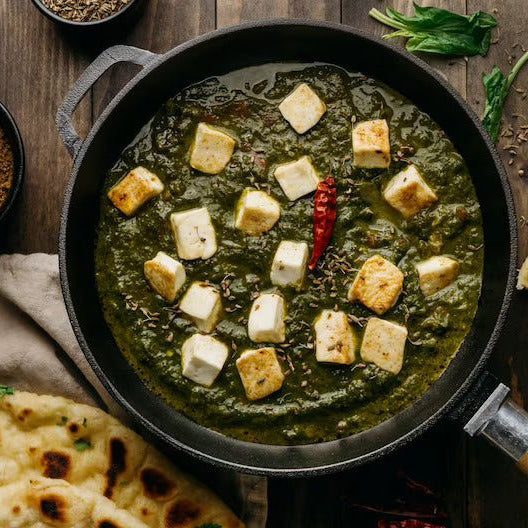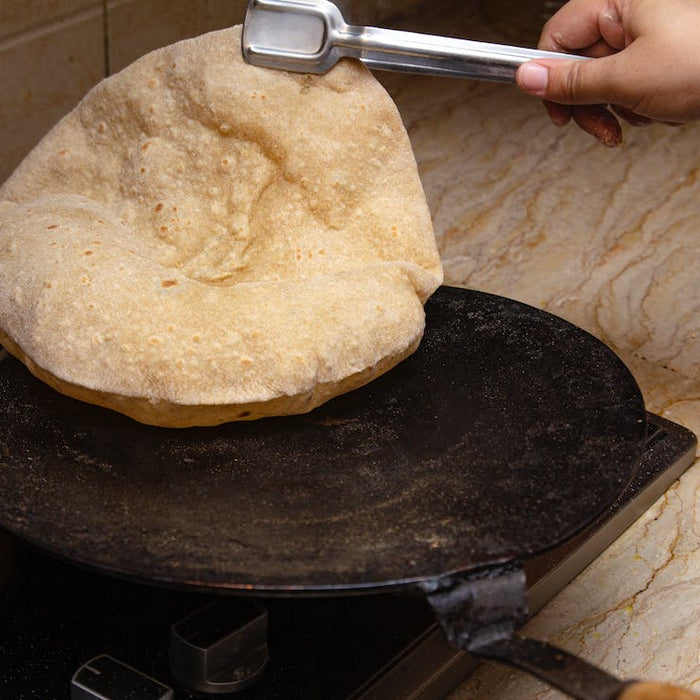
Granite Cookware Versus Non-Stick Cookware: Exploring the Best Metal for Cooking
When it comes to cooking, the choice of cookware can greatly impact your culinary experience. Two popular options that often come to mind are granite cookware and non-stick cookware. Both offer their unique features and advantages, but understanding the key differences between the two can help you make an informed decision about which one suits your cooking needs the best. In this blog, we will compare granite cookware and non-stick cookware, discuss the best metal for cooking, highlight their key features, and provide insights on utensils to use, as well as when and how to use them.
Content
- Best Metal for Cooking
- Granite Cookware
- Non-Stick Cookware
- Utensils to Use
- How to Use Granite Cookware and Non-Stick Cookware?
- conclusion
Best Metal for Cooking
Before delving into the comparison, let's first explore the best metals for cooking. Stainless steel, cast iron, and copper are often considered top choices due to their excellent heat conductivity and durability. Stainless steel is known for its non-reactive properties, making it ideal for cooking acidic foods. Cast iron offers exceptional heat retention and even heat distribution, while copper provides rapid temperature changes and precise cooking control. These metals are widely used in high-quality cookware and are popular among professional chefs and home cooks alike.
Granite Cookware:
Granite cookware, also known as granite-look cookware, is made by layering a non-stick coating over an aluminum or steel base. It offers a stylish granite-like appearance, which can enhance the aesthetics of your kitchen. Here are some key features of granite cookware:
a. Non-Stick Surface: The non-stick coating in granite cookware allows for easy release of food and makes cleaning a breeze. It requires less oil or fat for cooking, promoting healthier cooking options.
b. Durability: The aluminum or steel base provides durability and even heat distribution, ensuring consistent cooking results.
c. Heat Resistance: Granite cookware can withstand high heat, making it suitable for a variety of cooking methods, including stovetop and oven cooking.
d. Versatility: Granite cookware is compatible with most cooktops, including gas, electric, ceramic, and induction.
e. Aesthetics: The granite-like appearance adds a touch of elegance to your kitchen.
f. Care Instructions: To maintain the non-stick properties, avoid using metal utensils that could scratch the surface. Instead, opt for silicone, wooden, or plastic utensils. Handwashing is recommended to prolong the lifespan of the non-stick coating.
Non-Stick Cookware:
Non-stick cookware, on the other hand, typically features a metal base coated with a non-stick surface, such as Teflon or ceramic. Here are some key features of non-stick cookware:
a. Easy Release: The non-stick coating prevents food from sticking to the surface, making it effortless to flip and slide food items.
b. Minimal Oil/Fat Usage: Non-stick cookware requires little to no oil or fat for cooking, which can be beneficial for those seeking healthier cooking options.
c. Quick Cleaning: The non-stick surface makes cleaning a breeze, as food residue can be easily wiped off.
d. Heat Sensitivity: Non-stick coatings can be sensitive to high heat. Extreme temperatures or using metal utensils may cause the coating to deteriorate over time. It is important to follow the manufacturer's guidelines to maintain the non-stick properties.
e. Versatility: Non-stick cookware is compatible with most cooktops, except induction, unless specified as induction-compatible.
f. Care Instructions: Avoid using metal utensils and abrasive cleaners, as they can scratch or damage the non-stick coating. Handwashing is generally recommended, although some non-stick cookware may be dishwasher-safe.
Utensils to Use:
When using both granite cookware and non-stick cookware, it is important to choose the right utensils to avoid damaging the surface. Here are some recommended utensils for both types of cookware:
a. Granite Cookware: Opt for silicone, wooden, or plastic utensils to prevent scratching the non-stick coating. These materials are gentle on the surface and ensure longevity.
b. Non-Stick Cookware: Similar to granite cookware, silicone, wooden, or plastic utensils are recommended for non-stick cookware to prevent scratching the coating.
When to Use Granite Cookware and Non-Stick Cookware: Both granite cookware and non-stick cookware have their specific uses:
a. Granite Cookware: Granite cookware is well-suited for a wide range of cooking methods, including frying, sautéing, boiling, and baking. It is a versatile option for everyday cooking tasks.b. Non-Stick Cookware: Non-stick cookware excels in cooking delicate foods like eggs, pancakes, and fish, where sticking can be an issue. It is also great for low-fat cooking options.
How to Use Granite Cookware and Non-Stick Cookware?
To ensure optimal performance and longevity, here are some general guidelines on how to use granite cookware and non-stick cookware:
a. Preheat the cookware: Allow the cookware to preheat before adding ingredients. This ensures even heat distribution and helps prevent food from sticking.
b. Use low to medium heat: Avoid using excessive heat, as it can damage the non-stick surface. Moderate heat is usually sufficient for both granite cookware and non-stick cookware.
c. Seasoning (for cast iron): If using cast iron cookware, it is essential to season it before use to create a natural non-stick surface and enhance its durability. Seasoning involves coating the surface with oil and baking it at a specific temperature.
d. Cleaning: Follow the manufacturer's instructions for cleaning and maintenance. Avoid abrasive cleaners and metal scrubbers that can scratch or damage the cookware's surface.
In conclusion, both granite cookware and non-stick cookware offer unique advantages for different cooking needs. Granite cookware provides a stylish appearance, durability, and versatility, while non-stick cookware excels in easy food release and minimal oil usage. Consider your cooking preferences, the types of dishes you prepare most often, and the care required for each type of cookware when making your choice. By selecting the right cookware, you can elevate your cooking experience and enjoy delicious meals in your kitchen for years to come.
See below our Bestsellers of Premium Cookware👇
Featured collection
-
Original price - Original priceOriginal price Rs. 19.99Rs. 19.99-Current price Rs. 19.99
Product title
Original price - Original priceOriginal price Rs. 19.99Rs. 19.99-Current price Rs. 19.99 -
Original price - Original priceOriginal price Rs. 19.99Rs. 19.99-Current price Rs. 19.99
Product title
Original price - Original priceOriginal price Rs. 19.99Rs. 19.99-Current price Rs. 19.99 -
Original price - Original priceOriginal price Rs. 19.99Rs. 19.99-Current price Rs. 19.99
Product title
Original price - Original priceOriginal price Rs. 19.99Rs. 19.99-Current price Rs. 19.99 -
Original price - Original priceOriginal price Rs. 19.99Rs. 19.99-Current price Rs. 19.99
Product title
Original price - Original priceOriginal price Rs. 19.99Rs. 19.99-Current price Rs. 19.99 -
Original price - Original priceOriginal price Rs. 19.99Rs. 19.99-Current price Rs. 19.99
Product title
Original price - Original priceOriginal price Rs. 19.99Rs. 19.99-Current price Rs. 19.99
Blog posts
-
-

What is Karahi or Kadahi? Exploring Its Best Use in 2024 | Non Stick
The kadai or karahi holds a special place, when it comes to Indian cooking,choose MACclite kadai cookware for a healthier and more enjoyable cooking experience.Read now -

Best Tawa for Roti 2024 - Guide to Choosing the Best Iron Tawa for Your Family
The roti tawa is the right tool to achieve the ideal texture and taste. Finding the perfect roti tawa for your family can be both rewarding and challenging in 2024 due to the many options available.Read now



